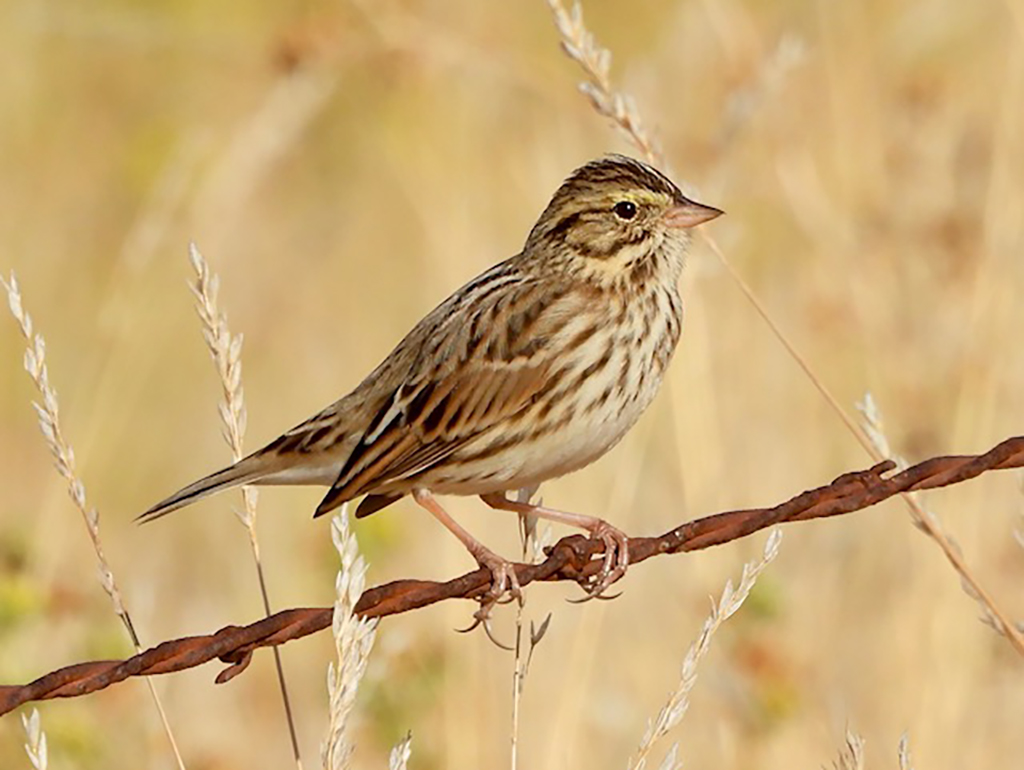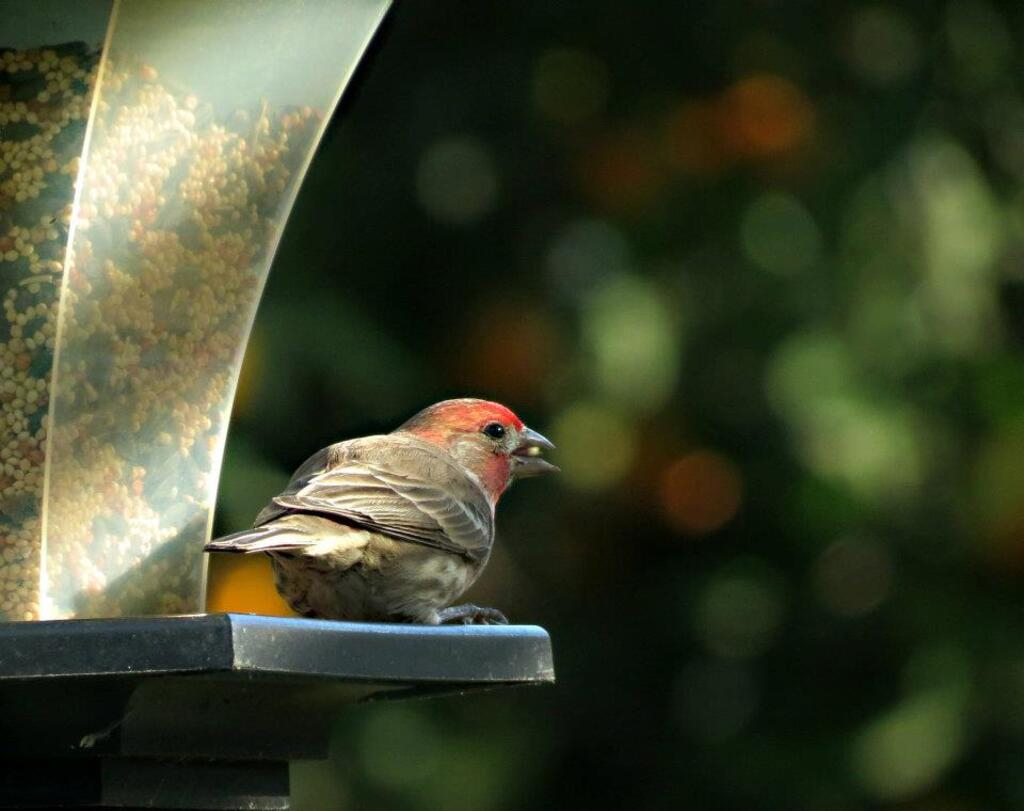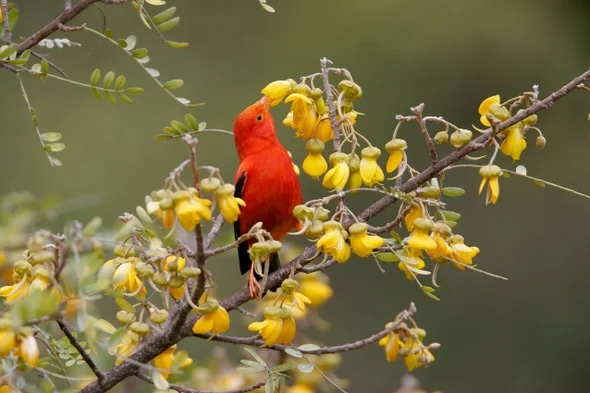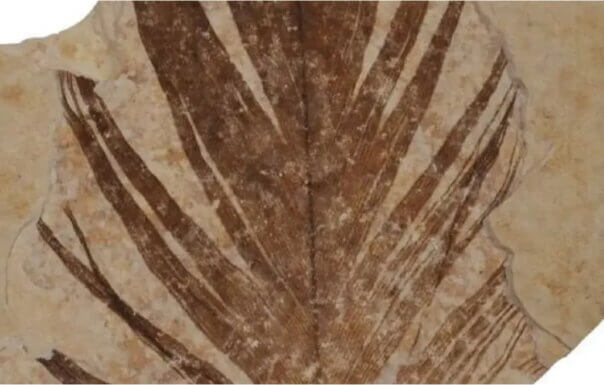30 Oct November 2023 Yellowbill

Editor’s Note
The Yellowbill is published monthly except in June, July and August. It is edited by Robert Snow (rsnow@fresnoaudubon.org) except for the Member Photos section, which is edited by Clayton Dahlen (mc_dahlen@yahoo.com). Archived issues are available at https://fresnoaudubon.org/the-yellowbill/.
President’s Message
Hello, FAS members and friends. I hope that you are all enjoying the fall season, along with the wonderful birds it brings to the Valley and adjacent foothills. Even just walking around my apartment complex, I am greeted by the sounds of Yellow-rumped Warblers, Orange-crowned Warblers, Ruby-crowned Kinglets, Dark-eyed Juncos, White-crowned Sparrows, and American Goldfinches. I hope you’re seeing and hearing some exciting birds where you are!
We have some exciting events scheduled for the month of November, which are listed below.
- Saturday, November 4⏤Yokohl Valley, 8:30 a.m. – 3:45 p.m. (note starting time change from 6:45 a.m.)
- Wednesday, November 8⏤Millerton Lake, Madera County side, 8:00 a.m. – 1:15 p.m.
- Friday, November 24⏤Opt Outside(Friant Cove, FINS Trail, Fresno side of Millerton Lake) 7:30 a.m. – 1:30 p.m.
- Wednesday, November 29⏤Merced National Wildlife Refuge, 11:45 a.m. – 8:00 p.m.
Anyone interested in these and other upcoming events can check out the FAS event calendar for more information and links to registration: https://fresnoaudubon.org/event-calendar/.
We still require that participants of FAS in-person events must not be exhibiting any symptoms of Covid-19. Registration is still REQUIRED for all in-person field trips, and participants must register individually. We appreciate your understanding and cooperation.
I would like to remind everyone that the 2023 Lost Lake Christmas Bird Count is scheduled for Saturday, December 16. The count circle covers not just Lost Lake, but also surrounding sections of both Fresno and Madera Counties. The count will last from sunrise to sundown, but participants can take part for as much or little as they’d like. It is not necessary to be an expert birder. Those who are less experienced can be paired with someone more experienced. Anyone who may be interested or might have any questions should reach out to me via email at tanagergirl@gmail.com.
We apologize for the last minute cancellation of the October 10 general meeting. We are working to reschedule Bruce Lyon’s talk about the breeding biology of coots for early next year.
The next general meeting is scheduled for Tuesday, November 14. Gail Patricelli, professor in the Department of Evolution and Ecology at the University of California, Davis, will be talking to us about Robots, Telemetry and the Sex Lives of Birds. This should be a very interesting presentation! Here is the link for registration: https://events.r20.constantcontact.com/register/eventReg?oeidk=a07ek1kkfoie623ce8f&oseq=&c=&ch=.
Please follow FAS on social media (Facebook, Instagram, and YouTube) if you’re not already. This is the perfect way to keep up with current FAS events, view past general meetings, and view fun, educational content!
To end this message, I’d like to share a photo I recently took of a non-breeding Semipalmated Plover. Note the pale underside, dark brown backside, dark cheek, breast band, thin yellow orbital ring, stubby beak with orange at the base, and the yellowish legs. Breeding adults have a darker cheek, darker breast band, dark forehead, and a brighter orbital ring. This species nests in arctic and subarctic habitats in northern Canada and Alaska, and overwinters along the Pacific and Atlantic coasts of the US, all the way down to southern Argentina. Enjoy!
Please take care of yourselves!
Rachel Clark
FAS President


Membership
Thank you to everyone who responded to the kickoff of Fresno Audubon Society’s (FAS) fall membership drive by responding by September 30. The results of the book drawing for those who joined or renewed by September 30 are in. Tom Zimoski won David Sibley’s “What It’s Like to Be a Bird” and Aaron Wiens won Stan Tekiela’s “Birds of California Field Guide.”
Fresno Audubon Society membership levels are:
$15 Student
$25 Individual
$35 Family
$1000 Golden Eagle (Life)
Fresno Audubon Society
PO Box 3315
Fresno, CA 93650
Thank you for your continuing support of Fresno Audubon Society!

November General Meeting
Gail Patricelli
Robots, Telemetry, & the Sex Lives of Wild Birds
Tuesday, 14 November 2023

Speaker Bio
Gail Patricelli is a professor in the Department of Evolution and Ecology and Chair of the Animal Behavior Graduate Group at the University of California, Davis. Members of the Patricelli Lab study the evolution of courtship and other forms of communication in birds and the impact of human activities, like urban development and noise pollution, on communication, breeding ecology, and reproductive success. This research uses technology such as biomimetic robotics, microphone arrays, acoustic monitoring, and remote telemetry to study populations in the wild, from local songbirds to species of conservation concern, such as greater sage-grouse.
Program Description
Animals use a dizzying array of sounds, smells, colors, dances, electrical fields and seismic vibrations to convince each other to mate. These elaborate courtship signals were a mystery until Darwin’s theory of sexual selection, which proposed that the courting sex (often, but not always the males) must be elaborate because the courted sex (often, but not always the females) demands it. But how do scientists study the conversations males and females in non-human animals have about mating? One way to do this is to participate, controlling one side of the conversation with a robot. Gail Patricelli will talk about using robotic females to study courtship behaviors in two spectacular species of birds, the satin bowerbird and the greater sage-grouse.
To receive the Zoom link for the meeting, please register here.

2023 Lost Lake Christmas Bird Count
Saturday 16 December 2023

On Saturday, December 16, 2023, Fresno Audubon will be hosting the annual Lost Lake Christmas Bird Count, which covers sections of both Fresno and Madera Counties. Participants will be assigned to particular sections, and will count each of the birds they see and hear. Generally, the count lasts from dawn until dusk, but we understand that some people who wish to participate might not be able to devote that much time to the count, and that is perfectly alright! Participants can devote as much or as little time as they desire, so do not be deterred if you cannot count birds all day! Even if you are not a birding expert, you can still partake in the count if you are willing to pair up with an expert birder, so do not let that deter you, either!
If you are interested in participating, or have any questions, please reach out to Lost Lake CBC compiler/Fresno Audubon president Rachel Clark at tanagergirl@gmail.com.
Sponsored by the National Audubon Society, the Christmas Bird Count, held annually from December 14-January 5, is a time during which citizen scientists from all over the Americas turn out to count birds in designated areas, collecting valuable data on the long-term health and status of bird populations. For more information about the history of the Christmas Bird Count and how the data is used, follow this link: https://www.audubon.org/

Introduction to Birding Class

November Field Trips

FIELD TRIP GUIDELINES ⏤ Fresno Audubon Society is offering field trips during the now-endemic COVID-19, subject to the following rules. With the continuing risks of exposure and potential illness, everyone must determine their own level of risk aversion. The CDC has recommended that masks should be optional when outdoors. It has been shown that a well-fitting N95 mask protects the wearer for several hours from an infectious dose of virus, so anyone concerned about exposure can choose to wear a mask near others if they feel at risk. Following are our current guidelines for our field trips.
- Participants must pre-register individually using the FAS event registration system.
- Participants must self-screen their own temperature before the outing and must not attend if they are feverish.
- Participants must consent to Fresno Audubon Society’s Liability Waiver by pre-registering.
- Social distancing is encouraged.
- Masks are not required, but participants are encouraged to wear a mask whenever they feel the need.
- Some field trips meet up at a central point before traveling to the field trip location. Participants may form their own car pools at these meetup points.
- Participants must contact their trip leader should they test positive for COVID-19 within three days following the outing so that we can notify others who attended the trip.
Saturday 4 November 2023 ⏤ Yokohl Valley
with Kevin Enns-Rempel

Registration is required. Register here for the event here.
Meeting location
Checklist: binoculars, scope, field guide, snacks, lunch, water, sunscreen, hat, dress in layers
Leader: Kevin Enns-Rempel
Phone: (559) 313-4546
email: kevin.enns.rempel@gmail.com
Wednesday 8 November 2023 ⏤ Millerton Lake (Madera West Side) with Larry Parmeter and Larry Cusick
Registration is required. Register here for the event here.
The Wednesday Walk on November 8 will be to the Madera (west) side of Millerton Lake and its campgrounds. We will meet at the Target parking lot at Riverpark at 8 a.m. and go from there. People are responsible for arranging carpools and rides in advance.
Contact:
Map to Fresno meeting location, 8:00 a.m.
Friday 24 November 2023 ⏤ #optoutside Opt Outside Bird Walk with Rachel Clark
Thanksgiving this year is on Thursday, November 23, and the day after is Black Friday, the biggest shopping day of the year. Instead of heading to the stores and braving the hordes of shoppers on Friday November, 24, please join Fresno Audubon for our #OptOutside event in and around the Friant area! We will be meeting at 7:30 AM at Friant Cove at the intersection of Millerton Road and North Fork Road (36.991123, -119.711654).
We will bird at Friant Cove for approximately 30 minutes, and after that, we will head to the Friant Interactive Nature Site, just down the road. After spending approximately an hour at the Friant Interactive Nature Site, we will head to the Fresno County side of Millerton Lake State Recreation Area (36.986393, -119.684266) and explore some of the habitat near the boat launch, and a part of the nature trail that parallels the road.
At Millerton Lake State Recreation Area, there is a $10 entry fee per vehicle (up to 9 people per vehicle). The cost for seniors is $9 per vehicle. If you have a State Parks pass, definitely bring it along! To reduce costs, we would like to encourage carpooling. Parking vehicles outside the entrance and walking in is not allowed per park rules. Our target species will include Bewick’s Wren, Rufous-crowned Sparrow, Rock Wren, Canyon Wren, California Towhee, California Quail, White-breasted Nuthatch, Spotted Towhee, Eared Grebe, Western Grebe, Bald Eagle, and many more! We will likely be wrapping up at Millerton Lake around 1:30 or 2:00. Please note that this itinerary is subject to change. We will keep registrants informed of any changes.
Participants should bring day packs, hats, sunscreen, sunglasses, plenty of water, snacks, lunch (if desired), and binoculars, and should dress in layers. Hiking shoes are recommended.
Registration is required for this event. Please register here.
Please reach out to trip leader Rachel Clark at tanagergirl@gmail.com or 515-357-0122 with any questions you might have.
Wednesay 29 November 2023 ⏤ Merced National Wildlife Refuge with Judy Johnson
Registration required: Please register here.
With winter migrants filling local refuges and putting on a tremendous show, it is a wonderful time to bird Central Valley wetlands. Join Fresno Audubon on Wednesday, November 29 for a tour of the Merced National Wildlife Refuge. We will meet at the MacDonald’s parking lot in the Marketplace at El Paseo (6741 N Riverside Dr, Fresno, CA 93722, see map) at 11:45 a.m. for a noon start. Secondary meet up is at the first parking lot of the refuge, near the bathrooms and the first observation deck, at 1:00 p.m. (see map).
Map to McDonald’s
Map to MNWR
After driving the auto tour, we will gather at the second observation deck at sundown for the spectacular crane fly-in, which should end around 5:30 p.m.
Target birds include Lesser Sandhill Cranes, phoebes, various sparrows, American Pipits, numerous species of ducks and geese, American White Pelicans, wading birds and shore birds, egrets, American Coots, Red-tailed Hawks, Northern Harriers and other hawks. Also possible are Bald Eagles, Great-Horned Owls, and Vermillion Flycatchers.
Participants should bring day packs, hats, sunscreen, sunglasses, plenty of water, snacks, lunch (if desired), and binoculars, and should dress in layers. We probably will not be doing much hiking, but comfortable walking shoes are recommended. Please bring radios (walky-talkies) if you have them.
Registration required: Please register here.
Checklist: binoculars, spotting scopes, cameras, jackets, snacks, water, insect repellent, and radios.
Trip Leader: Judy Johnson (559) 977-2787

October Field Trip Reports
River West Madera with John McDaniel
Fourteen birders spent about 3 1/2 hours Tuesday morning exploring the trails and roads extending along the north side of the San Joaquin River in the eBird Hotspot area referred to as “River West Madera.” The weather was clear, but cool and quite breezy with temperatures in the 60’s.
Despite the challenges posed by the breeze, a total of 40 species were tallied. George Folsom kindly kept the tally for the eBird report. The following is the detail on the bird count:
Canada Goose 16
Mallard 8
Pied-billed Grebe 9
Mourning Dove 28
Anna’s Hummingbird 5
Killdeer 10
Least Sandpiper 8
Greater Yellowlegs 2
Double-crested Cormorant 2
Great Blue Heron 8
Great Egret 17
Snowy Egret 10
Black-crowned Night-Heron 2
Turkey Vulture 11
Cooper’s Hawk 2
Red-tailed Hawk 5
Belted Kingfisher 2
Acorn Woodpecker 5
Downy Woodpecker 1
Northern Flicker (Red-shafted) 5
American Kestrel 3
Black Phoebe 3
Say’s Phoebe 1
California Scrub-Jay 6
American Crow 5
Common Raven 6
Cliff Swallow 1
Ruby-crowned Kinglet 1
European Starling 25
Northern Mockingbird 2
Phainopepla 2
House Finch 2
White-crowned Sparrow (Gambel’s) 11
Golden-crowned Sparrow 4
Vesper Sparrow 1
Spotted Towhee 1
Red-winged Blackbird 55
Brewer’s Blackbird 6
Great-tailed Grackle 3
Yellow-rumped Warbler (Audubon’s) 2
Raptor Trail with Susan Heidebrecht
On Saturday, October 14th Eleven birders met on the South side of the Kings river, just below Pine Flat dam for an outing along the Raptor Trail. The skies were relatively clear with the Autumn haze that is typical of our region.
The morning temperatures were in the 70’s to high 80’s by noon. Most of the trail is comprised of Oaks, Willows, and Sycamore trees as well as Button willows and other riparian vegetation, making this trail a good site for birding. The first stretch of the walk is an old asphalt covered road that eventually leads to the Raptor Trail. Upon reaching the Trail there is a turnstile to pass through. The trail head is marked. We enjoyed hearing and seeing 33 species of birds. Kevin Enns-Rempel kept the tally for our bird list.
Mallard 4
Common Merganser 4
California Quail 27
Mourning Dove 12
Anna’s Hummingbird 4
Killdeer 1
Spotted Sandpiper 2
Great Blue Heron 3
Osprey 1
Bald Eagle 1
Red-tailed Hawk 7
Belted Kingfisher 3
Acorn Woodpecker 20
Nuttall’s Woodpecker 2
Northern Flicker 7
American Kestrel 1
Black Phoebe 5
California Scrub-Jay 15
Common Raven 6
Oak Titmouse 5
Tree Swallow 50
Violet-green Swallow 25
Ruby-crowned Kinglet 4
White-breasted Nuthatch 1
European Starling 10
Northern Mockingbird 1
Western Bluebird 45
House Finch 5
Lesser Goldfinch 6
Lark Sparrow 2
White-crowned Sparrow 10
Spotted Towhee 3
Yellow-rumped Warbler 75
Sycamore Island with George Folsom
Once again, Sycamore Island delivered excellent birding. With cool temperatures and mostly clear skies, thirteen birders found 48 species Including many Yellow-rumped Warblers, several Orange-crowned Warblers, a Downey Woodpecker, 4 Wilson’s Snipe, a Spotted Sandpiper, 9 Black-crowned Night-Herons and a Green Heron. Thanks to John McDaniel for handling the eBird list.
The eBird list is here: https://ebird.org/checklist/S153070936

Member Photographs
Patrick Cassen

George Folsom


Sue Thorson




Birds in the News
Links to Recent Articles on Birds
What an orphan owl taught an ecologist about bird intelligence

Owls are associated with intelligence, which isn’t surprising, because these birds have incredible smarts and even distinct personalities, as ecologist Carl Safina learned firsthand. After he and his wife Patricia rescued a baby screech owl that couldn’t be returned to the wild, they learned a lot about what owls are really like, as it grew up and raised its own baby owls.
The Race to Protect Endangered Condors Against Deadly Bird Flu

Early March last year, an endangered California condor — one of less than 350 of its kind surviving in the wild — perched on an Arizona cliff-face staring into space for days. It’s probably sick from lead poisoning, thought Tim Hauck, the condor program director with The Peregrine Fund, a nonprofit conservation group helping to reintroduce condors to the skies above Grand Canyon and Zion. These bald-headed scavengers — weighing up to 25 pounds with black-feathered wings spanning nearly 10 feet — often fall victim to lead exposure when they consume the flesh of cows, coyotes, and other large mammals killed by ranchers and hunters firing lead bullets. Listlessness and droopy posture are tell-tale signs. “We were like, I bet this bird’s got into something bad,” said Hauck.
Millions of Mosquitoes Will Rain Down on Hawaii to Save an Iconic Bird

Dinosaur Feathers From 125 Million Years Ago Reveal The Evolution Of Modern Birds

CORK, Ireland — Scientists have discovered that modern bird feathers inherited proteins from their dinosaur ancestors approximately 125 million years ago. This revelation indicates that certain species of feathered dinosaurs might have utilized their feathers to glide.
While prior research implied that dinosaur feathers contained proteins that rendered them more pliable than those of contemporary birds, it’s now believed that most dinosaur feathers contained alpha-keratin proteins, which added flexibility. In contrast, modern bird feathers are abundant in beta-keratin proteins, giving them the strength required for flight.
A Lavishly Illustrated Catalog of All Hummingbird Species Known in the 19th Century Gets Restored & Put Online

If you don’t live in a part of the world with a lot of hummingbirds, it’s easy to regard them as not quite of this earth. With their wide array of shimmering colors and frenetic yet eerily stable manner of flight, they can seem like quasi-fantastical creatures even to those who encounter them in reality. They certainly captured the imagination of English ornithologist John Gould, who between the years of 1849 and 1887 created A Monograph of the Trochilidæ, or Family of Humming-Birds, a catalog of all known species of hummingbird at the time. As you might expect, this is just the kind of old book you can peruse at the Internet Archive, but now there’s also an online restoration that returns Gould’s illustrations to their original glory.
Newsom signs bill restricting use of toxic rat poison

California will restrict the usage of a toxic rat poison known to harm wildlife under a new law signed by Gov. Gavin Newsom on Friday. AB1322, also known as the California Ecosystems Protection Act of 2023, adds pesticides containing the chemical diphacinone to an existing list of restricted rat poisons. Diphacinone kills rats by preventing their blood from clotting, but it can also be fatal to birds, mountain lions and other animals who eat the poisoned rats, according to a 2021 report by the California Department of Fish and Wildlife. In 2020 and 2021, up to half of all animals who were found to have died from pesticide exposure had been exposed to diphacinone, according to the Department of Pesticide Regulation.
Since escaping an aviary in the ’70s, Calif. city’s population of exotic birds has exploded

In December 1977, a dust storm raged through Central California: 100 mph winds yanked trees from their roots, crashed power lines and turned cars and trucks into crushed tin cans rolling down the road. The California National Guard in Bakersfield was activated and rescued 35 people huddled under a bridge. Several brush fires raged in the region, including one at Vandenberg Air Force Base (now Vandenberg Space Force Base) that killed at least three people, including the base’s installation commander.
Once the dust had settled in Bakersfield, the storm’s epicenter, hundreds of homes and businesses began to dig out of the “thick, mustard-colored grit covering the city.” For one business, the Happy Bird Aviary, the roof had blown off, and it had lost everything — including two breeding pairs of rose-ringed parakeets, a tropical, green-hued bird native to southern Asia and central Africa.
Birds nesting in agricultural lands more vulnerable to extreme heat, study finds

As climate change intensifies extreme heat, farms are becoming less hospitable to nesting birds, a new study found. That could be another barrier to maintaining rapidly eroding biodiversity that also provides benefits to humans, including farmers who get free pest control when birds eat agricultural pests.


Sorry, the comment form is closed at this time.